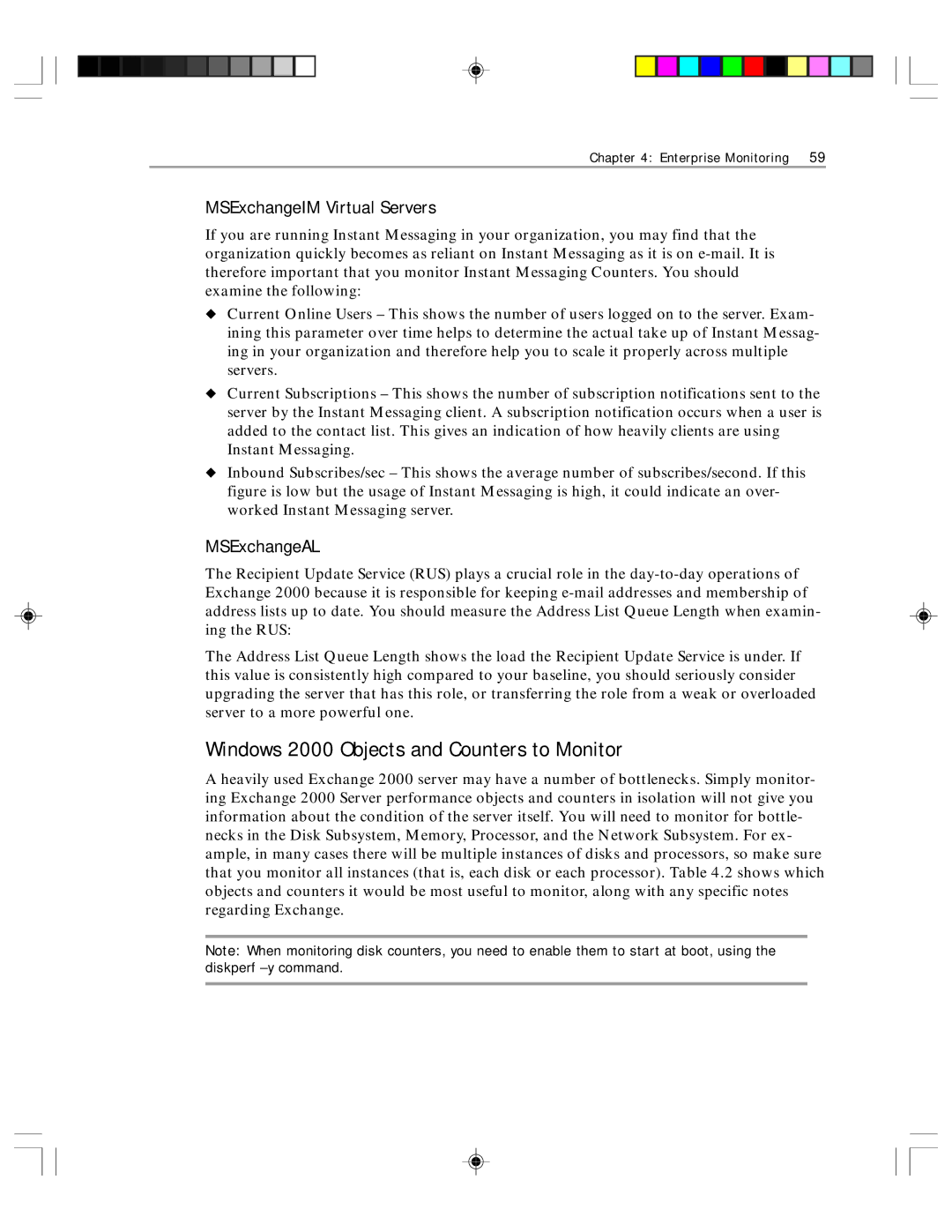
Chapter 4: Enterprise Monitoring | 59 |
MSExchangeIM Virtual Servers
If you are running Instant Messaging in your organization, you may find that the organization quickly becomes as reliant on Instant Messaging as it is on
◆Current Online Users – This shows the number of users logged on to the server. Exam- ining this parameter over time helps to determine the actual take up of Instant Messag- ing in your organization and therefore help you to scale it properly across multiple servers.
◆Current Subscriptions – This shows the number of subscription notifications sent to the server by the Instant Messaging client. A subscription notification occurs when a user is added to the contact list. This gives an indication of how heavily clients are using Instant Messaging.
◆Inbound Subscribes/sec – This shows the average number of subscribes/second. If this figure is low but the usage of Instant Messaging is high, it could indicate an over- worked Instant Messaging server.
MSExchangeAL
The Recipient Update Service (RUS) plays a crucial role in the
The Address List Queue Length shows the load the Recipient Update Service is under. If this value is consistently high compared to your baseline, you should seriously consider upgrading the server that has this role, or transferring the role from a weak or overloaded server to a more powerful one.
Windows 2000 Objects and Counters to Monitor
A heavily used Exchange 2000 server may have a number of bottlenecks. Simply monitor- ing Exchange 2000 Server performance objects and counters in isolation will not give you information about the condition of the server itself. You will need to monitor for bottle- necks in the Disk Subsystem, Memory, Processor, and the Network Subsystem. For ex- ample, in many cases there will be multiple instances of disks and processors, so make sure that you monitor all instances (that is, each disk or each processor). Table 4.2 shows which objects and counters it would be most useful to monitor, along with any specific notes regarding Exchange.
Note: When monitoring disk counters, you need to enable them to start at boot, using the diskperf
